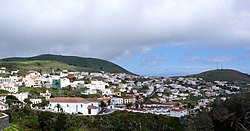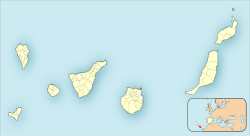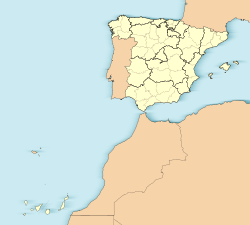Valverde | |
|---|---|
 | |
 Location of the municipality within El Hierro | |
 Location of Valverde | |
| Coordinates: 27°48′0″N17°55′0″W / 27.80000°N 17.91667°W | |
| Country | |
| Autonomous community | |
| Province | |
| Island | |
| Area | |
• Total | 103.65 km2 (40.02 sq mi) |
| Elevation | 571 m (1,873 ft) |
| Population (2024) [2] | |
• Total | 5,268 |
| • Density | 51/km2 (130/sq mi) |
| Postal code | E-38900 |
Valverde (Spanish meaning "green valley") is a municipality in the Canary Islands in the province of Santa Cruz de Tenerife. It is located on the northeast part of El Hierro (the rest of the island being the municipalities of Frontera and El Pinar). The town of the same name serves as the island's official capital. It is both the smallest Canarian capital and the only one not located by the sea. The town's airport and seaport are both several kilometres away on the island's east coast.
Contents
Pastureland and smallholdings dominate the central plateau area with pine and cloud forest at progressively higher elevations. The coastal areas and lower slopes are arid and mainly left to unimproved scrub and sparse grassland. Volcanism is prominent, with several cinder cones and areas of lava flow to be seen.





